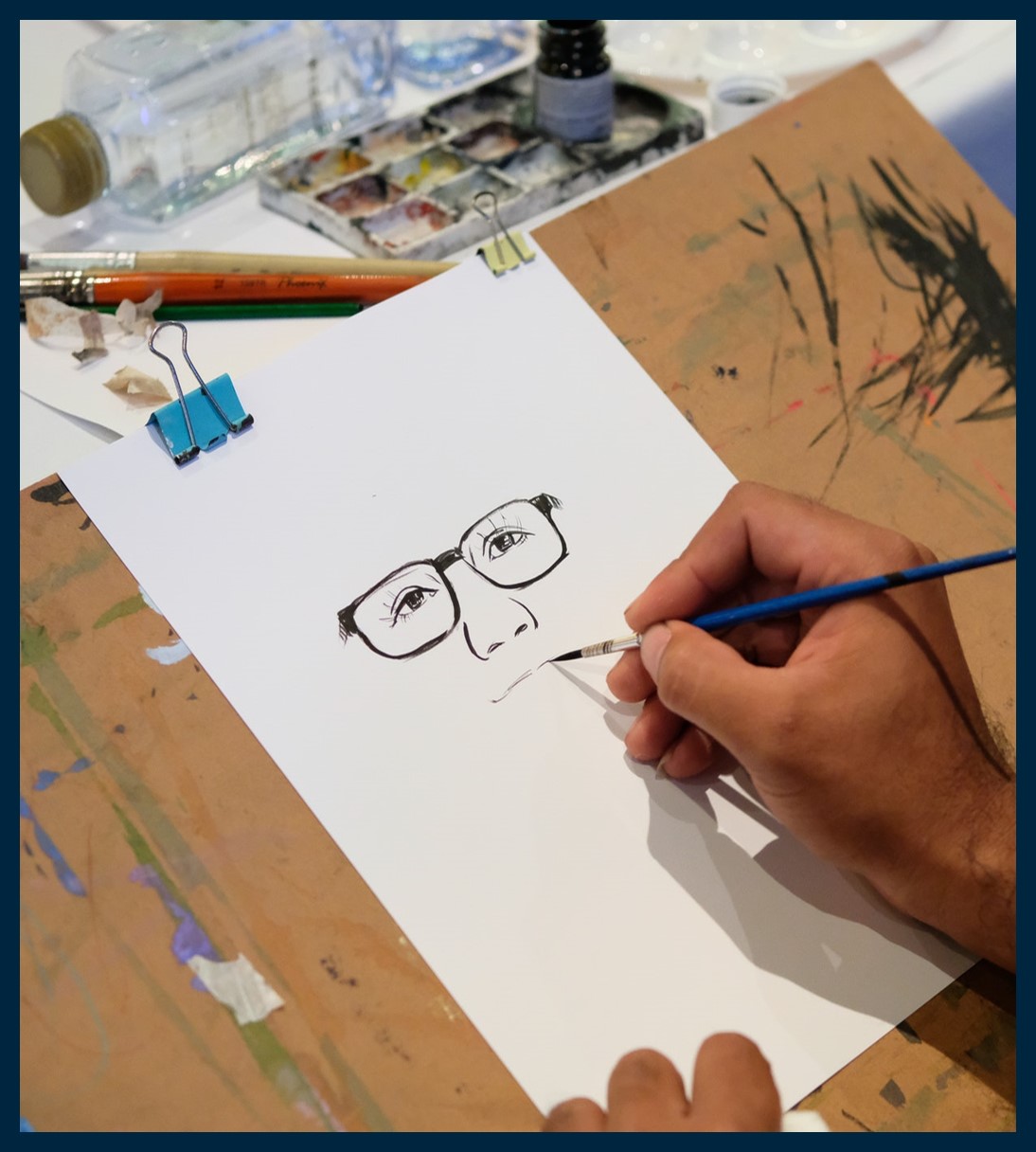

PROCESS
“Test drives”
Communicating with something with a few words or lines…
Keywords: simplification, observation skills, advanced awareness
Who?
Artist Al Hirschfeld. He is best remembered for black-and-white drawings of celebrities and show-business stars, Hirschfeld was one of the few artists commissioned to provide art for U.S. postal stamps. His work can be found in museums around the country today, including the Metropolitan Museum of Art and the Museum of Modern Art, both in New York City.
Hirschfeld was also a master of camouflage.
What?
Hirschfeld created recognizable images of anyone or anything. His art and his creative technique itself is thae key point of this Steam case. Visualizing even the most complicated of things in a simple, yet clever way. The case teaches how we can communicate ideas to one another.
Why?
To make communication easier and simpler. The point lies in finding and simplifying the essence, sharpening the main point of an idea. The following method trains us to realize and communicate specific details in our surroundings.
Results
Despite the sharpness of his lines and the clarity of his work, Hirschfeld was also a master of camouflage. Each week, droves of his fans would spend their Sunday’s searching for the word ‘NINA’ in his drawings. What started out as an innocent little gesture to celebrate the birth of his daughter turned into a weekend pastime for millions of readers.
Hisrchfeld’s ‘NINA’s’ became so popular that they were even adopted as a training exercise by the U.S. Army (much to Hisrchfeld’s annoyance). Bomber pilots in training would use the illustrations as a means to improve their detection skills. If they were able to find the ‘NINA’s’ in each illustration, then they were sure to be able to detect hidden targets.
Bomber pilots in training would use the illustrations as a means to improve their detection skills.

In 1924, Hirschfeld traveled to Paris and London, where he studied painting, drawing and sculpture. When he returned to the United States, a friend, fabled Broadway press agent Richard Maney, showed one of Hirschfeld’s drawings to an editor at the New York Herald Tribune, which got Hirschfeld commissions for that newspaper and then, later, The New York Times. Hirschfeld is considered to be one of the most important figures in contemporary drawing and caricature, having influenced countless artists, illustrators, and cartoonists.
Sources
Al Hirschfeld Foundation. 2022. alhirschfeldfoundation.org. [online] Available at: https://www.alhirschfeldfoundation.org/ [Accessed 18 March 2022].
McCall, B. and Stern, E., 2021. Always Leave Them Smiling: The Art of Al Hirschfeld. [online] Nytimes.com. Available at: https://www.nytimes.com/2021/07/08/books/review/hirschfeld-the-biography-ellen-stern.html [Accessed 18 March 2022].